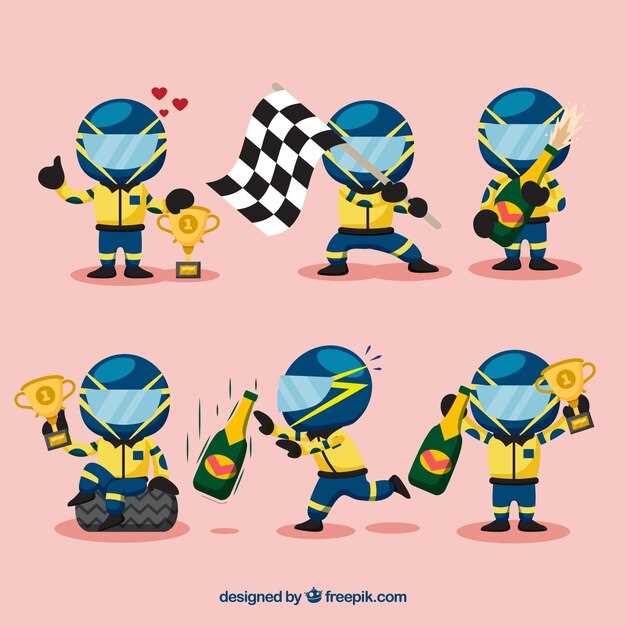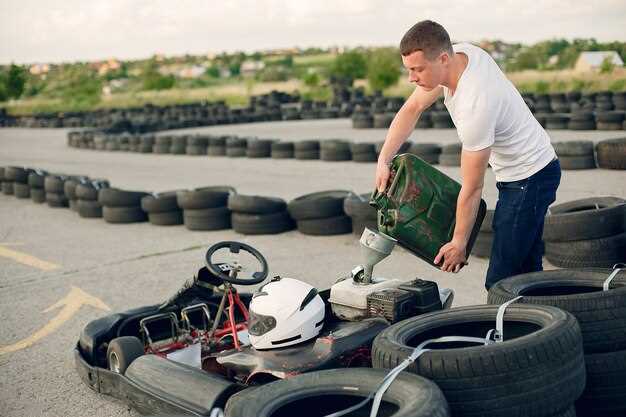
Entering the world of racing can be both exhilarating and intimidating for newcomers. Understanding track etiquette is essential for ensuring not only your own safety but also the safety and enjoyment of fellow racers. Adhering to established norms and practices on the track sets the stage for a respectful and competitive environment.
New racers often underestimate the importance of communication and awareness in this high-speed arena. Being mindful of your surroundings, including fellow competitors and track officials, is crucial. This article will provide you with essential tips on how to navigate track etiquette effectively, ensuring a smoother experience as you embark on your racing journey.
From understanding the significance of proper lines to learning when to yield, mastering these etiquette skills can greatly enhance your performance and the camaraderie among racers. It’s not just about speed; it’s about respect. Let’s delve into some of the fundamental rules that every new racer should keep in mind as they hit the track.
Understanding the Racing Line: How to Navigate the Track Smoothly
The racing line is the fastest path around the track, and mastering it is essential for every new racer. To find the best line, a deep understanding of your vehicle’s dynamics, track layout, and cornering techniques is crucial.
Begin by observing the track layout and identifying the key turns. Most tracks have a combination of tight corners and sweeping bends. A good racing line takes advantage of these features to minimize distance and maximize speed. The ideal racing line typically consists of entering corners wide, apexing at the inside, and exiting wide to carry speed onto the straights.
When approaching a corner, position your car toward the outside edge of the track. This allows for a smoother entry and enables better control. As you near the apex, shift your focus to balancing your throttle and steering inputs. Aim to clip the apex precisely, which helps in maintaining momentum as you exit the corner.
Another critical aspect is understanding weight transfer. As you brake into a corner, weight shifts forward, increasing front grip. This can be beneficial for tighter corners. Conversely, in high-speed turns, it’s important to manage the balance to avoid losing traction. Smooth steering and throttle application reduce the risk of oversteering or understeering.
Practice the concept of late apexing, where you delay your steering input slightly. This technique can open up your exit, allowing you to accelerate earlier and exit faster. Use visual markers around the track–these can be cones, painted lines, or track features–to help with your positioning and timing as you navigate each corner.
Lastly, consistency is vital. Regularly practicing the racing line will not only improve your lap times but also familiarize you with how to handle your vehicle under different conditions. Remember that a smooth and controlled approach is often faster than aggressive maneuvers. By refining your understanding of the racing line, you’ll enhance your overall racing performance and enjoyment on the track.
Communicating with Fellow Racers: Signals and Safety Practices

Effective communication among racers is crucial for maintaining safety and ensuring a smooth racing experience. Understanding standard signals and safety practices can help prevent accidents and foster a cooperative atmosphere on the track.
Hand Signals are the primary mode of communication when racing. Familiarize yourself with common gestures used to convey intentions. For example, raising your hand can indicate you are slowing down or stopping, while pointing in the direction you plan to go alerts others to your intended path. Always use clear and deliberate gestures to avoid confusion.
Verbal Warnings also play a key role in maintaining safety. When approaching a fellow racer, especially during overtaking maneuvers, a simple shout, such as “on your left” or “coming up,” can inform them of your presence. Make sure to project your voice clearly while staying aware of any ambient noise that might hinder communication.
Eye Contact is an often-overlooked aspect of racer communication. Establishing eye contact with other racers before making any significant moves can ensure mutual understanding and reduce surprises. It’s a simple yet effective way to signal awareness and intention.
Track Familiarity enhances communication. Understanding the layout and common pitfalls of the race track allows you to anticipate the actions of others. If you know a particular turn is challenging, signal early to communicate your need to slow down or take a different line.
Additionally, adhering to Safety Practices is vital. Always wear appropriate safety gear, including helmets and race suits, which protect you and create a more uniform environment. Following established racing lines and respecting the space of others minimizes risk during competitive maneuvers.
Finally, remember that Sportsmanship fosters a positive racing culture. Treat fellow racers with respect, even in competitive settings. Apologies for accidental contact, offering assistance, or acknowledging a good race enhance camaraderie and make the track a safer place for everyone.
Preparing Your Vehicle for Race Day: Essential Checkpoints Before Hitting the Track

Before you hit the track, ensuring your vehicle is race-ready is crucial for both performance and safety. Start with a thorough inspection of the engine. Check fluid levels, including oil, coolant, and brake fluid. Look for any signs of leaks, and if necessary, top off or replace these fluids.
Examine the tires for any signs of wear, proper inflation, and adequate tread depth. Ensure that the tires are suitable for your specific track conditions. Additionally, check the alignment and balance as incorrect settings can lead to poor handling during the race.
Inspect the brakes thoroughly. Check the brake pads for wear and verify that the rotors are free of warping or excessive wear. Proper braking performance is essential, so replace any worn components before race day.
Review the suspension system, ensuring that all components are secure and free of damage. Stiffer springs or upgraded shocks can enhance handling, but ensure they are appropriate for your vehicle and track type.
Verify that all safety equipment is functional. This includes seatbelts, fire extinguishers, and helmets adhering to safety standards. Consider installing a roll cage if you haven’t yet, as it enhances driver safety in case of accidents.
Test the electrical systems, including the battery, lights, and ignition. A well-functioning electrical system is vital for reliable performance during a race. Make sure all connections are secure and that the battery is fully charged.
Lastly, clean your vehicle inside and out. A clean car can help with aerodynamics and serves as an important mental boost on race day. Ensure you have all necessary documents, including your registration and proof of insurance, readily available.